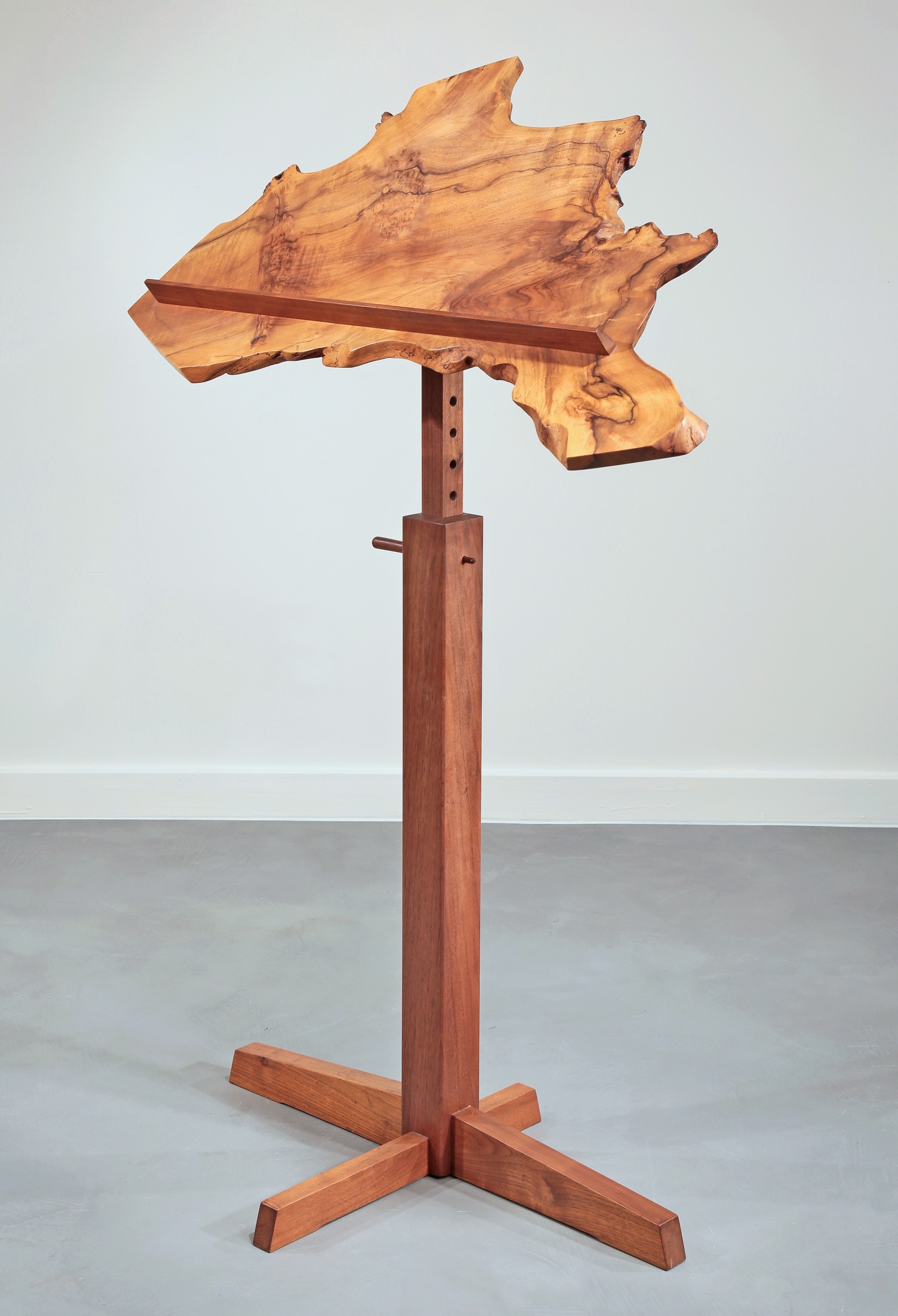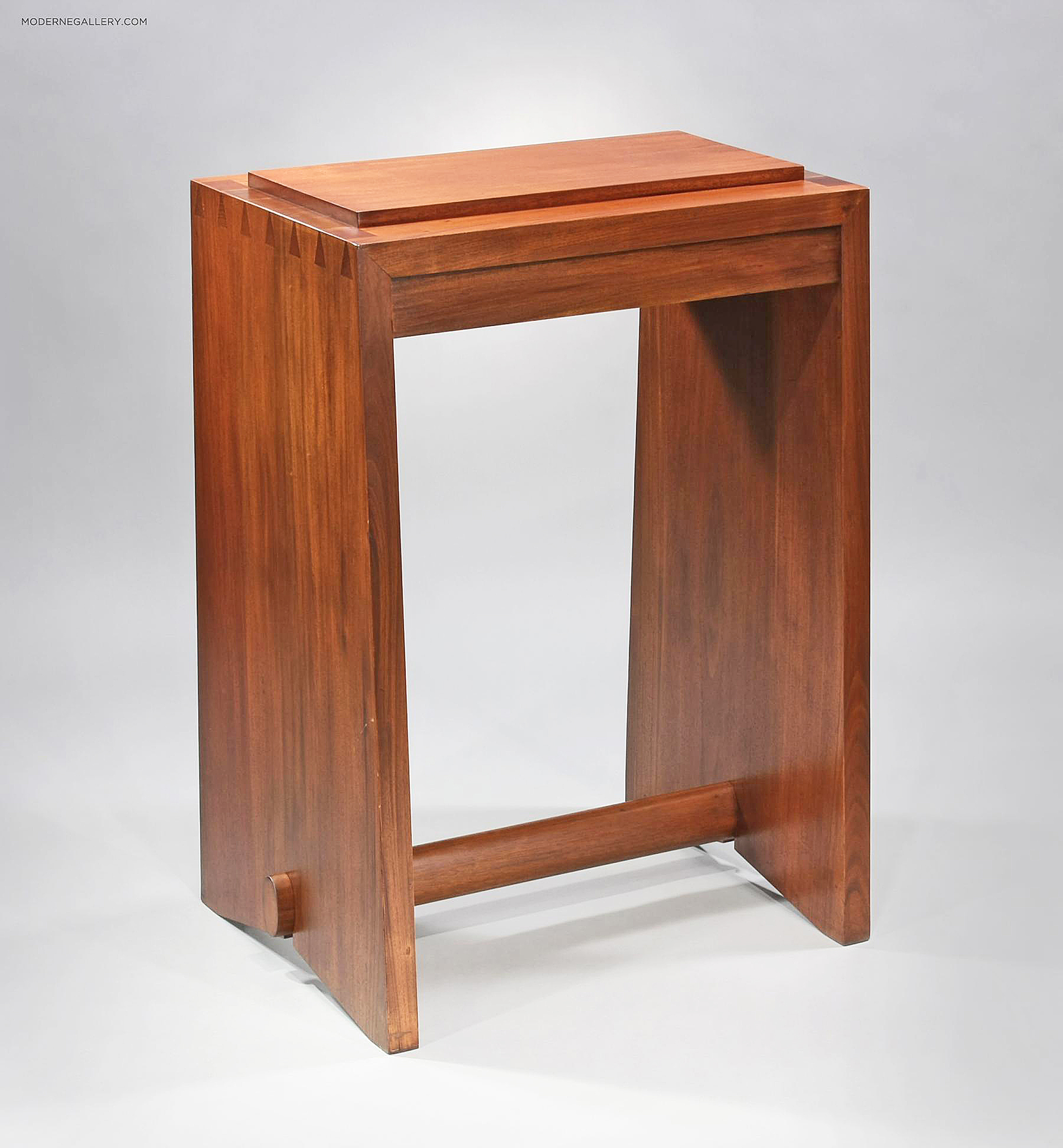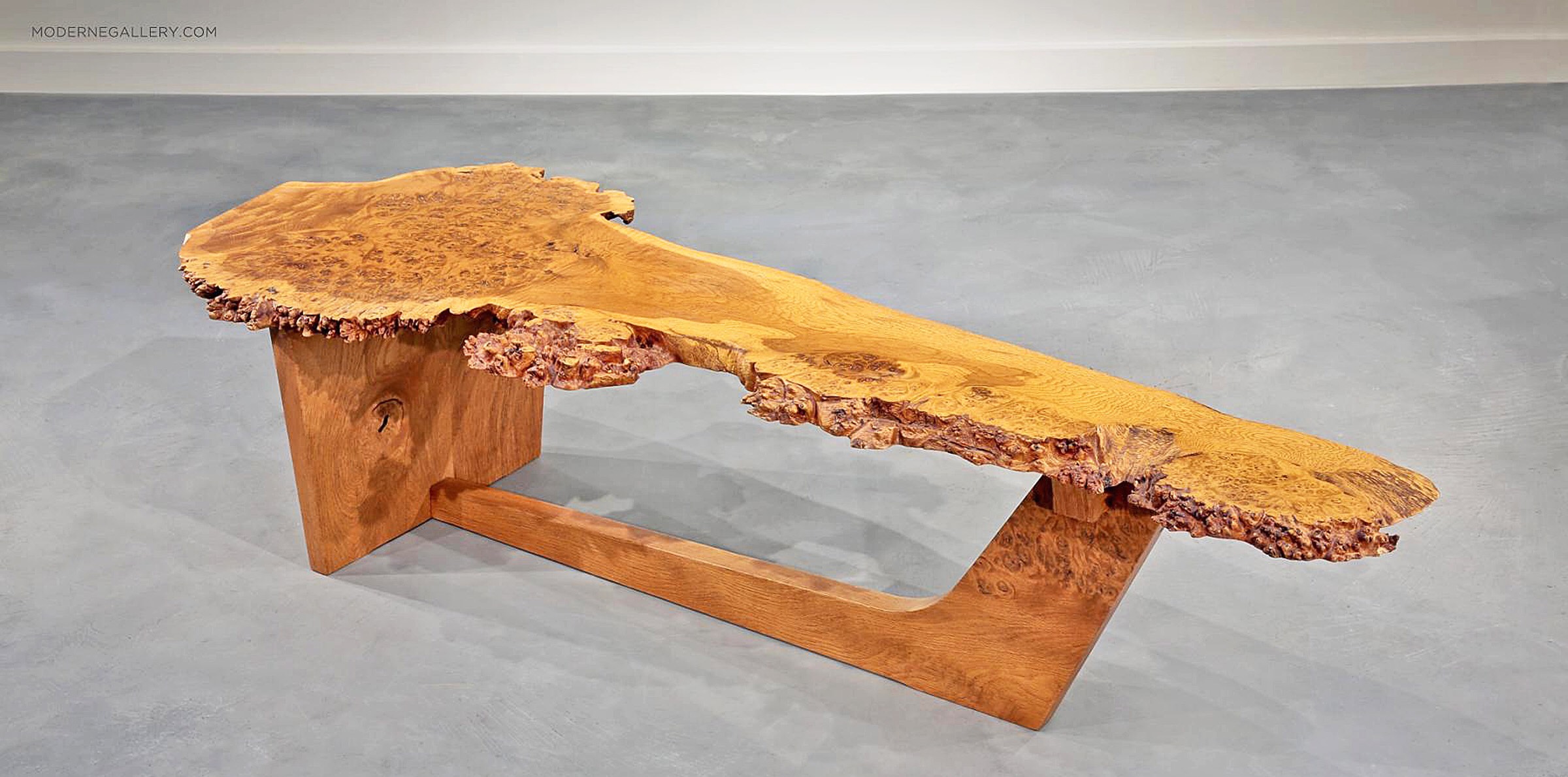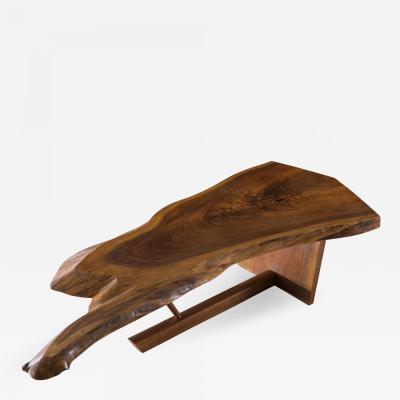George Nakashima: Rare and Unique Works Exhibition at Moderne Gallery
This is George Nakashima as you've never seen him before.
A forthcoming exhibition at Moderne Gallery, in Philadelphia, brings together forty rare and unique pieces of furniture by the Japanese-American woodworker, including chairs, dining tables, end tables, coffee tables, desks, buffets, and benches. Nakashima seldom produced the same design twice, but all the pieces on view represent some departure from his preferred materials and techniques. Among the highlights are an English oak burl sled-based coffee table, an adjustable-height print stand for the display of Japanese woodcuts, and a custom wall sculpture with book-matched free-form slabs of American black walnut.

- George Nakashima, Extremely Rare and Large Persian Walnut and Rosewood Conoid Dining Table, 1971-2. Featuring seven rosewood butterflies. Accompanied by twelve rosewood Conoid chairs. From Moderne Gallery.

- George Nakashima, Unique Print Stand, 1981. Featuring an English walnut board. From Moderne Gallery.
“The title of this show pretty much tells you all you need to know,” says Robert Aibel, co-director of Moderne Gallery with his son, Joshua Aibel. “These are pièces uniques, many of them done to suit the wishes of a particular client. We’re focusing on pieces that have rarely been seen before—and may never be seen again.”
Nakashima, widely regarded as one the most influential makers of 20th-century furniture, is renowned for his use of irregular slabs of wood with cracks, holes, and other flaws. Rather than try to conceal these imperfections, the woodworker highlighted the personality of each slab, sometimes by inserting butterfly rosewood inlays into fissures in the wooden matrix. In this way, Nakashima honored the spiritual character of wood, paying homage to what he called the “second life” of a tree.
“Nakashima had a great love and respect of nature, a desire to work with a lifeform,” says Aibel. “The philosophical basis of his work was the Eastern concept of one-ness, which guided him as he brought a modern sensibility to Japanese and American vernacular design. In essence, Nakashima took very disparate elements and brought them together. He was both Catholic and a follower of [the Indian yogi and philosopher] Sri Aurobindo—not a normal combination.”
Born in 1905 in Spokane, Wash., to Japanese immigrants, Nakashima studied architecture at the University of Washington, the Massachusetts Institute of Technology, and the École Américaine des Beaux Arts in Paris. After that, he circumnavigated the world on a pilgrimage, living for two years as a monk in an Indian ashram. Following the outbreak of World War II, Nakashima was detained at an internment camp in Idaho until a friend, the architect Antonin Raymond, arranged for his release. In 1945, Nakashima started a furniture workshop in New Hope, Pa., with $100.

- George Nakashima, Sculpture Stand, 1963. Featuring a unique design in a rare wood - East Indian Laurel. From Moderne Gallery.
Apart from his affinity for irregular slabs of wood, Nakashima is widely admired for synthesizing architectural and organic forms, as with the adjustable-height print stand, in which a geometric base is surmounted by a nebulous shape that resembles a wisp of smoke (or even the continent of Australia). The dichotomy between man-made and natural can also be seen in the English oak burl sled-based coffee table, above, which combines an elegant base with a guitar-shaped slab with a knobby contour.
“Some of these boards look like they were dug up from ancient times,” says Aibel. “Once again, this juxtaposition of architectural elements with organic, even preternatural, forms was something entirely new. Nakashima originated styles and ways of working that simply did not exist before he came along.”
Founded in 1984, Moderne Gallery began to promote the work of George Nakashima the following year—making it the first gallery to recognize the importance of the epoch-defining woodworker. Aibel likes to tell the story of a phone call he received in 1985, when a prospective seller told him, “We have some used furniture that we want to sell… by this guy from New Hope called George Nakashima. We’re moving, we’re done with it, and we just want to sell it now.” (Needless to say, Aibel took him up on his offer.) Moderne Gallery organized its first exhibition of Nakashima furniture in 1989.
“George Nakashima: Rare & Unique Works” will be on view May 12-August 12, 2017 at Moderne Gallery, 111 N. 3rd Street, Philadelphia, PA. For more information, call 215.923.8536 or visit www.modernegallery.com.
To view all inventory at Moderne Gallery, click here.
To view more work by George Nakashima, click here.
To read “Alters For Peace: The Legacy of George Nakashima,” click here.
































